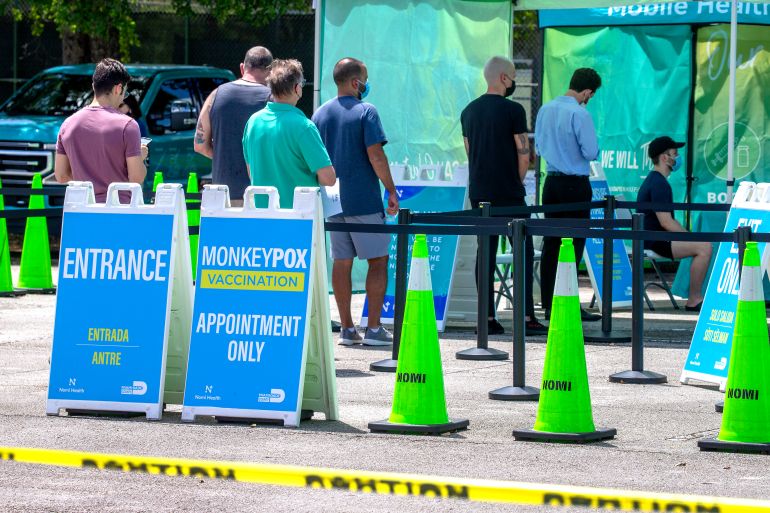To beat the next pandemic, Big Pharma can learn from chipmakers
Chip firms have found a way to pool their resources and innovate faster, while still retaining product patents.

The monkeypox outbreak is a chilling reminder of our vulnerability to infectious diseases. With the COVID-19 pandemic far from over, it’s past time to take stock of how to further accelerate innovation in the pharmaceutical industry. As chief executive of imec, a leading semiconductor research centre, one solution is glaringly clear to me: Pharma companies would benefit tremendously from adopting a new research and development (R&D) model.
The chip industry’s singular success could serve as inspiration.
Keep reading
list of 4 itemsDeadly Sahel heatwave caused by ‘human-induced’ climate change: Study
Woman, seeking loan, wheels corpse into Brazilian bank
UK set to ban tobacco sales for a ‘smoke-free’ generation. Will it work?
Most readers are aware that designing chips is incredibly complex and costly. However, it’s a lesser-known fact that the industry pools its knowledge and resources to limit the risks associated with chip R&D. While competitors retain patents on their commercial products, they continuously collaborate to improve crucial manufacturing processes, pursue feasibility studies, train staff, test new materials, and, ultimately, develop the next generation of semiconductor technologies. The ensuing intellectual property is shared among partners, allowing chip companies and toolmakers like the Dutch firm ASML to innovate in tandem with one another.
The free circulation of knowledge has led to industry-wide standards from which the entire manufacturing chain benefits. This, in turn, has enabled unprecedented technological progress. Look no further than the smartphone in your pocket for evidence: The latest models are about a million times more powerful than the NASA computer that put the first man on the Moon in 1969.
In the decades that followed Neil Armstrong’s lunar landing, the number of transistors on a microchip doubled every two years. This exponential growth referred to as Moore’s Law, has resulted in the world’s leading chip scientists now engineering semiconductor components with atomic precision.
This unprecedented level of control could bring new possibilities to the life sciences. So why not repurpose some of the cutting-edge technologies and chips that have been developed for, say, the telecommunications industry to enable medical breakthroughs and strengthen our pandemic defences?
Unfortunately, an ever-growing body of relevant expertise is fragmented across disciplines: from nano, quantum and sensor technology to artificial intelligence, robotics, and microfluidics (the science and technology of manipulating fluids through extremely narrow channels).
Meanwhile, high-tech infrastructure is becoming prohibitively expensive, requiring tens of billions of dollars in investments and highly sought-after staff. No matter how resourceful, a single pharmaceutical or biotech company simply cannot procure all relevant state-of-the-art knowledge and equipment from these rapidly evolving scientific fields.
The solution lies in sharing infrastructure investments and creating large-scale, interdisciplinary partnerships. It’s the best way for companies to quickly absorb as much relevant external knowledge as possible, yet this idea starkly contrasts with the pharmaceutical industry’s culture of hoarding intellectual property. Sharing knowledge with direct competitors is rarely, if ever, considered.
However, when companies define and limit their ownership of intellectual property to innovations they genuinely need to diversify their products, they open up the possibility of investing in R&D with competitors. This “coopetitive” framework is the critical driver of progress in the chip industry: competitors work together to solve crucial technical challenges. In turn, the technologies that arise out of these alliances lead to new abilities and, in some cases, create entirely new markets. It’s capitalism at its best.
An industry doesn’t change overnight. Experts, however, warn that we remain insufficiently prepared for future pandemics, making cross-industry cooperation a vital path forward if we are to fortify our defences.
Next-gen technologies can further accelerate therapeutics and vaccines’ development and manufacturing while improving our pathogen surveillance and testing capacities. Moreover, breaking through technical barriers might also pay huge dividends in other areas of health, such as advancing the understanding, screening and treatment of non-communicable diseases like cancer.
If the past two years have taught us anything, it’s that going back to business-as-usual would be a particularly fraught decision. Why risk it, when there is so much more to gain?
The views expressed in this article are the author’s own and do not necessarily reflect Al Jazeera’s editorial stance.
